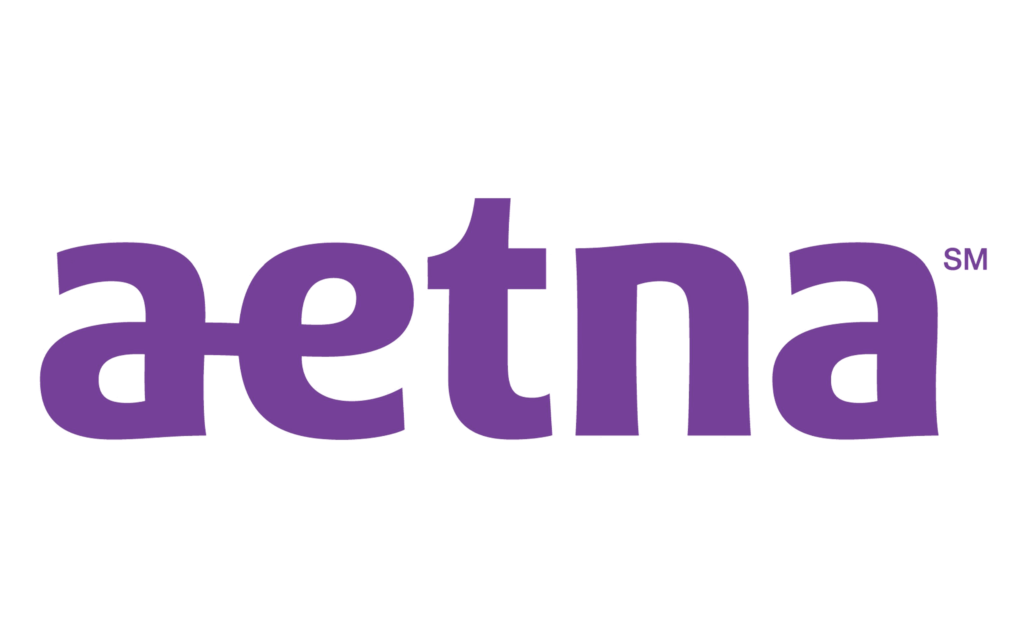Understanding Substance Use Disorders
Before discussing interventions for substance use disorder, it’s important to first have a clear understanding of what substance use disorders are and their prevalence in society.
Defining Substance Use Disorders
Substance use disorders, often referred to as drug addiction, involve the misuse of substances such as alcohol, tobacco, and illicit or prescription drugs. These disorders are characterized by an inability to control the use of these substances, despite their negative impact on one’s life. It’s a chronic disease that can cause considerable harm to an individual’s health, relationships, and overall quality of life.
The Prevalence of Substance Use Disorders
Substance use disorders are prevalent across all demographics and age groups. According to a study published in PubMed Central, the prevalence rates of alcohol, tobacco, and other drug use among adolescents peaked during the late 1970s and early 1980s, declined in the late 1980s, and began increasing again in the 1990s.
Furthermore, the study noted that non-medical prescription drug abuse is a growing problem among adolescents, with increasing rates of abuse for drugs such as Vicodin, OxyContin, and Percocet.
| Substance | Rate of Use (1970s – 1980s) | Rate of Use (1990s) |
|---|---|---|
| Alcohol | Peaked | Increased |
| Tobacco | Peaked | Increased |
| Illicit Drugs | Peaked | Increased |
| Prescription Drugs (Non-medical use) | – | Increased |
Risk and protective factors for substance use and abuse can be identified and addressed at the individual, family, school, and community levels. Understanding these factors is a crucial part of developing effective interventions for substance use disorder.
To tackle substance use disorders effectively, it’s essential to have a range of treatment options available to meet the diverse needs of individuals. The following sections of this article will delve into different treatment methods and therapies, the role of family and peer support in recovery, and future directions in substance use disorder treatment.
Treatment Options for Substance Use Disorders
Addressing substance use disorders often involves a combination of therapeutic approaches. A critical choice in the process involves deciding between inpatient and outpatient programs. Furthermore, the role of medication-assisted treatment in managing withdrawal symptoms and preventing relapse is also key in recovery.
Inpatient vs. Outpatient Programs
Inpatient treatment centers provide individuals with a structured environment free from triggers and daily stressors, offering therapy, counseling, and support groups for substance use disorder. These programs typically last between 28 to 90 days.
| Program Type | Duration |
|---|---|
| Inpatient | 28 – 90 days |
| Outpatient | Varies, multiple sessions per week for a few months |
On the other hand, outpatient programs offer flexibility for individuals to maintain work or school commitments while still receiving therapy and support for their addiction. The length of these programs can vary but often require multiple sessions per week for a few months (Addiction Center).
According to NCBI, weak to moderate evidence suggests that individuals receiving residential treatment for substance use disorders are more likely to complete treatment and be considered abstinent compared to outpatient clients. However, residential treatment is associated with a higher risk of death after treatment.
Role of Medication-Assisted Treatment
In the journey towards recovery, medication-assisted treatment (MAT) plays a pivotal role. MAT is often used in conjunction with therapy to help individuals manage withdrawal symptoms and prevent relapse. Medications like methadone, buprenorphine, and naltrexone are commonly prescribed for opioid use disorder.
| Substance Use Disorder | Common Medications |
|---|---|
| Opioid Use Disorder | Methadone, Buprenorphine, Naltrexone |
The largest treatment trial to date, Project MATCH, found that four sessions of motivational enhancement therapy (MET) were as effective as 12 sessions of cognitive-behavioral therapy (CBT) or 12-step facilitation (TSF) for reducing alcohol consumption and improving treatment outcomes. This suggests that the relationship between therapist and client may be more important than matching treatments to specific clients (NCBI).
In sum, the choice of treatment for substance use disorders depends on various factors, including the severity of the disorder, the individual’s personal circumstances, and their specific needs and preferences. Both inpatient and outpatient programs, along with medication-assisted treatment, can play a crucial role in supporting individuals on their path to recovery.
Effective Therapies for Substance Use Disorders
When it comes to providing help for those grappling with substance use disorders, incorporating effective therapeutic interventions is crucial. Among the most impactful therapies are Cognitive-Behavioral Therapy, Motivational Interviewing, and Contingency Management.
Cognitive-Behavioral Therapy
Cognitive-Behavioral Therapy (CBT) is a form of psychotherapy that has proven to be a highly effective intervention for substance use disorders across many drugs of abuse. Particularly when combined with substitute prescribing for opiate users, CBT has shown significant results in treating this complex disorder.
This therapy aims to alter harmful thought patterns that contribute to substance use and teach individuals new strategies for dealing with life’s challenges. By modifying the way one thinks and behaves, they’re better equipped to avoid triggers and deal with situations that could otherwise lead to substance use.
Motivational Interviewing
Motivational Interviewing (MI) is a patient-centered counseling approach designed to enhance motivation for change. Studies have shown that MI effectively improves treatment adherence and drinking outcomes for alcohol use problems, particularly in the short-term. Furthermore, MI has shown to be more effective with young people and those with occasional heavy drinking patterns and low dependence.
The goal of MI is to help individuals explore and resolve ambivalence about their substance use and to encourage them to take the necessary steps towards change. Through empathetic listening and non-confrontational discussion, therapists help individuals understand the impact of their actions and motivate them to make healthier choices.
Contingency Management
Contingency Management (CM) is an evidence-based approach that uses reward and consequence systems to encourage positive behavior change. This form of treatment has shown promise in treating substance use disorders, with the premise of providing tangible rewards for positive behaviors such as maintaining sobriety or attending therapy sessions.
One approach within CM, known as Cue exposure treatment, exposes individuals with alcohol dependence to alcohol-related cues without consuming alcohol, demonstrating promising results. However, further large-scale clinical trials are required to solidify its efficacy (NCBI).
Each of these therapies plays a crucial role in the recovery process, providing individuals with the tools and support needed to overcome substance use disorders. The effectiveness of these interventions underscores the importance of seeking professional help and taking a comprehensive approach to treatment, emphasizing that recovery is not only possible but achievable for everyone.
The Role of Family in Substance Use Disorder Treatment
When it comes to the treatment of substance use disorders, the role of the family cannot be underestimated. They often serve as the primary support system, helping their loved ones navigate the challenging path to recovery. The family’s role extends beyond providing emotional support as they can also be instrumental in initiating and sustaining interventions for substance use disorder.
Impact of Substance Use Disorder on Families
Substance use disorders can profoundly impact families. The prevalence rates of alcohol, tobacco, and other drug use among adolescents peaked during the late 1970s and early 1980s, declined in the late 1980s, and began increasing again in the 1990s (PubMed Central). This rise underscores the pressing need for family involvement in treatment interventions.
Families dealing with substance use disorders often experience a range of negative emotions, including guilt, shame, fear, and anxiety. They may also have to face social stigma, financial difficulties, and legal issues. Additionally, substance use disorders can lead to strained family relationships, with trust issues and communication breakdowns being common challenges.
Risk and protective factors for substance use and abuse can be identified and addressed at the individual, family, school, and community levels. Recognizing these factors can help families take proactive steps to prevent substance use disorders or intervene effectively when a loved one is struggling with addiction.
Importance of Family Therapy
Family therapy has emerged as a critical component in the treatment of substance use disorders. This therapeutic approach focuses on the family dynamics that may contribute to the development and continuation of substance use disorders. It also helps improve communication and support among family members, which can be instrumental in the recovery process.
Family therapy can provide families with the tools and strategies they need to support their loved one’s recovery while also addressing their own needs. It can help families understand the nature of substance use disorders, learn how to cope with stress and conflict, and develop healthier ways to interact and communicate.
Substantial progress has been made in developing prevention programs for adolescent drug abuse that target salient risk and protective factors at the individual, family, and/or community levels. Family therapy can play a vital role in these prevention efforts by fostering a supportive and understanding environment that can mitigate the risks of substance use disorders.
In conclusion, the role of the family in substance use disorder treatment is multifaceted and significant. By understanding the impact of substance use disorders on families and the importance of family therapy, it’s possible to develop more effective interventions for substance use disorder that harness the power of familial support and understanding.
Incorporating Brief Interventions in Treatment
As part of a comprehensive approach to managing substance use disorders, brief interventions have been recognized as effective tools in facilitating change for those struggling with these conditions.
Overview of Brief Interventions
Brief interventions for substance abuse problems have been utilized extensively by professionals across diverse fields, including alcohol and drug counselors, social workers, psychologists, physicians, and nurses. These interventions are also used in various settings such as social service agencies, hospital emergency departments, court-ordered educational groups, and vocational rehabilitation programs (NCBI Bookshelf).
A brief intervention can take on a multitude of forms. It could range from unstructured counseling and feedback to a more formal structured therapy. The flexibility of brief interventions means they can be adapted to suit individuals from a wide range of cultures and backgrounds. Furthermore, brief interventions can be tailored to provide motivational support appropriate to the client’s stage of change, helping to motivate specific behavioral changes at each stage of the recovery process (NCBI Bookshelf).
Effectiveness of Brief Interventions
Research has shown that brief interventions are effective procedures for working with individuals exhibiting at-risk use and less severe abuse behaviors. These interventions have been found successful when implemented in specialist treatment settings and performed by trained alcohol and drug counselors (NCBI Bookshelf).
One significant advantage of brief interventions is their ability to initiate immediate change. By providing feedback, advice, and motivational support, these interventions can help individuals recognize the harmful effects of substance use and take the first steps towards recovery.
While brief interventions can be an effective part of the treatment process, it’s important to remember that they are not a stand-alone solution. They often work best when incorporated into a comprehensive treatment plan that includes other therapeutic approaches and support systems. As such, brief interventions should be viewed as a valuable tool in the wider context of interventions for substance use disorder.
Role of Peer Support in Recovery
Peer support plays a significant role in the recovery process from substance use disorders. It provides individuals with a sense of community and understanding that is often essential in overcoming addiction. Peer support can come in various forms, with peer support groups being a common and effective approach.
Benefits of Peer Support Groups
Peer support groups have shown tangible benefits in substance use disorder treatment. These benefits include improved engagement in treatment, reduced substance use, decreased risk behaviors related to HIV/Hepatitis C Virus (HCV), and reduced secondary substance-related behaviors such as craving and self-efficacy.
Other benefits from peer support services include increased treatment retention, improved relationships with treatment providers and social supports, increased satisfaction, and reduced relapse rates. Peer support groups are an integral aspect of the addiction recovery process, showing positive outcomes in terms of active engagement in recovery and sustaining recovery.
| Benefits of Peer Support Groups |
|---|
| Improved engagement in treatment |
| Reduced substance use |
| Decreased HIV/HCV risk behaviors |
| Reduced craving and self-efficacy |
| Increased treatment retention |
| Improved relationships with treatment providers and social supports |
| Increased satisfaction |
| Reduced relapse rates |
Challenges in Peer Support Integration
Despite the evident benefits of peer support groups in treating substance use disorders, there are challenges in integrating them effectively into treatment plans. A significant challenge is the limited data on the topic, making it difficult to draw definitive conclusions and formulate best practices.
These challenges highlight the need for more research to fully understand the nuances of peer support groups and how they can be best incorporated into interventions for substance use disorder. Despite these challenges, the positive outcomes associated with peer support groups underscore their potential as a valuable tool in the recovery process from substance use disorders.
Future Directions in Substance Use Disorder Treatment
As scientific understanding of substance use disorders continues to evolve, so too do the approaches used to treat these complex conditions. The exploration of new treatment methodologies and a sustained commitment to research could pave the way for more effective interventions for substance use disorder.
Promising New Treatment Approaches
Recent innovations in the field suggest promising avenues for the treatment of substance use disorders. Cue exposure treatment, for instance, where individuals with alcohol dependence are exposed to alcohol-related cues without consuming alcohol, has shown promising results. However, this approach still requires further validation through large-scale clinical trials.
Another approach that has shown potential is motivational enhancement therapy (MET). In the largest treatment trial to date, Project MATCH, four sessions of MET were found to be as effective as 12 sessions of cognitive-behavioral therapy (CBT) or 12-step facilitation (TSF) for reducing alcohol consumption and improving treatment outcomes. This suggests that the relationship between therapist and client may be more important than matching treatments to specific clients (NCBI).
In the realm of prevention, substantial progress has been made in developing programs that target salient risk and protective factors at the individual, family, and community levels. These prevention programs typically focus on alcohol, tobacco, and marijuana use due to their widespread use and the significant risk they pose to public health.
Importance of Ongoing Research
Ongoing research plays a critical role in advancing our understanding of substance use disorders and developing more effective treatment approaches. The rise of non-medical prescription drug abuse among adolescents, for example, underscores the need for research to explore innovative strategies for addressing this growing problem.
Furthermore, research into risk and protective factors for substance use and abuse at the individual, family, school, and community levels can inform the design of comprehensive prevention and treatment strategies.
Brief interventions, which have been used for many years by various types of healthcare and social service professionals, are another area of promising research. These interventions can involve a variety of approaches and may be applicable to individuals from a wide range of cultures and backgrounds. They have shown potential in motivating behavioral changes at each stage of the recovery process, particularly when transported into specialist treatment settings (NCBI Bookshelf).
In conclusion, the future of substance use disorder treatment lies in ongoing research and the development of innovative therapeutic approaches. By continuing to explore and implement evidence-based strategies, we can create more effective interventions for substance use disorder and offer hope to those affected by these challenging conditions.










